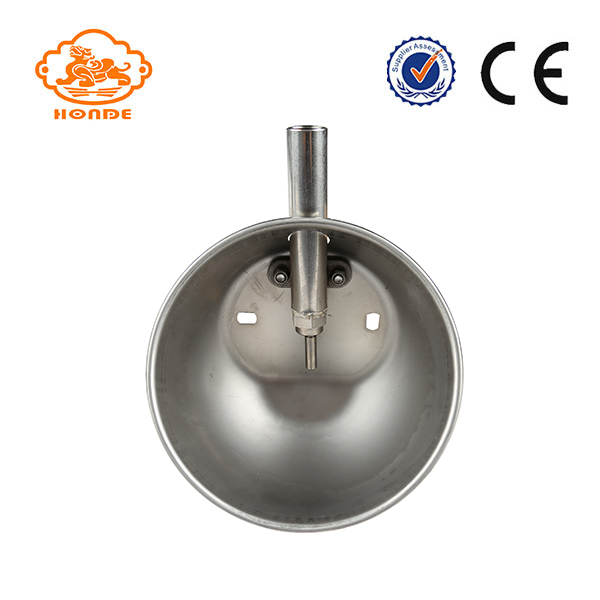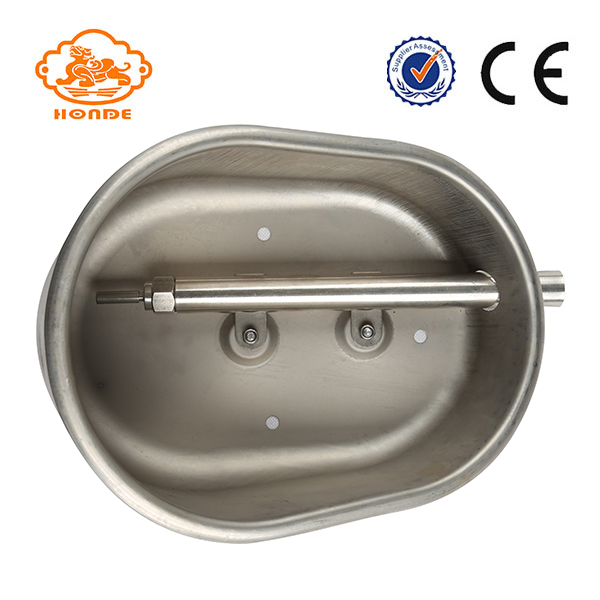Muscovy Ducks or Western Ducks (also known as Barbary Ducks) have a low hatching rate due to the special structure of the eggs, which is a major problem in hatchery production. The Qingshen County Breeding Technology Research Institute adopts a bionic incubator to effectively increase the hatching rate and hatching rate of Muscovy ducks and Western duck eggs. Now we will introduce the relevant technologies in the following: I. Composition of bionic incubators: From Vertical hatching box and flat hatching kit. During the pre-hatching period, the duck eggs are incubated at a low temperature, and the ducks are hatched in a vertical box. The characteristics of uniform heat supply at the bottom of the vertical box and the surrounding storage heat are used to make the temperature of the duck and duck eggs uniform, and the eggs are hatched after 17 days. Since the temperature rises gradually, not only does it require a constant supply temperature, but also requires sufficient oxygen, humidity, and cool eggs. At this time, the Muscovy duck eggs should be transferred from the vertical box to the flat hatching box and hatched through the flat hatching box. Adding hot and cold water can accurately adjust the egg temperature within the required range, and at the same time, increase, decrease, thicken, thin or open the cover of the incubator box, so as to adjust the oxygen supply and cool eggs in the middle and late stages until the embryonic eggs are hatched. Problems such as humidification and imitation have caused them to hatch from the hatching state. This not only significantly increases the hatching rate of the duckling eggs, but also enhances the adaptability of the ducklings to the natural environment. Second, the structure characteristics of Muscovy duck eggs: eggshell thick, smooth and hard, not easily broken, strict pore seal, relative small surface area. Directly affect the gas exchange, moisture evaporation, heat transfer and clamshell hatching. Therefore, the conventional hatching conditions make the embryonic chicks less susceptible to shelling. Third, the preservation and placement of eggs: the length of preservation of eggs and the temperature closely. When the ambient temperature is lower than 18°C, the hatching rate is higher within 6 days; otherwise, the hatching rate is low. Therefore, it is very important to choose clean and fresh duck eggs for hatching; horizontal placement of eggs will help the normal development of embryos and thus increase the hatching rate of Muscovy duck eggs. Fourth, temperature and humidity control: 1 temperature. Due to the special structure of the shell membrane, eggshell, stomata and inner shell membrane of Muscovy duck eggs, the hatching eggs are slow to heat during the early stage of hatching, and their lipid content is relatively high. In addition, a large amount of physiological heat is produced in the middle and later stages, making it difficult to dissipate heat. Therefore, in the incubation process, the principle of Schwarm is: pre-incubation eggs before hatching at 36 °C -38 °C, preheat 6-8 hours, in which the early high, mid-term flat, later slightly lower, slightly higher hatching temperature They are 1-7 days at 39-39.6°C, 8-19 days at 38.5-39.0°C; 20-30 days at 38-38.6°C, and 31 days at 38.6-39.2°C. 2 humidity. The principle of controlling humidity is: two heads are high and the middle is flat. Pre-humidity is high, so that the eggs can be heated well and evenly; medium-term level is conducive to the embryo's metabolism; to the late stage and the hatching stage, the purpose of raising the humidity is to dissipate too much physiological heat, so that the eggshell structure is loose, so that the shell Chubby. However, when the humidity exceeds 75% and the ventilation is poor, embryos may cause acidosis due to poor gas exchange, resulting in the death of embryos. This is most noticeable. In practice, the temperature and humidity must be adjusted in conjunction with cool eggs and water spray, and the effects of seasonal placement and other environmental factors on the matching placement of the bionic vertical hatching box and the flat hatching hatching should be considered. Fifth, cold eggs and water spray: 1 cool eggs and water spray is an effective measure to adjust the temperature and humidity, a great impact on the hatching rate. With the matching vertical and flat hatching operation, the shelling rate can be increased by 10%-15% compared with the conventional hatching method. In the early stage of hatching, eggs are generally not cooled. According to the above-mentioned Schwenn program, the egg temperature in the middle and later stages can reach 38.8°C. The eggshell has a relatively small surface area, small pores, and slow heat dissipation. If you do not emit too much physiological heat in time, it may cause the embryo to be suffocated. Cold eggs can strengthen the gas exchange of the embryos, eliminating the build-up of heat in the eggs, cooling the eggs 2-4 times a day. Cold eggs range in length from time to time depending on the situation, and continue to hatch when the temperature drops to 35°C. 2 Water spray is now considered to be the key to improving the hatching rate of Muscovy duck eggs. The water spray function has three points: one is to destroy the shell membrane; the other is to promote continuous shrinkage and expansion of the shell and shell membrane, destroy their integrity, increase permeability, speed up the evaporation of water and normal weight loss of the egg, so that the air chamber Expanded volume and adequate oxygen supply; third is to cause crisp shells. Muscovy duck eggs have thick shells and hard shells. The former affects the evaporation of gas and moisture, and the latter hinders clam shells. The presence of the membrane on the shell is beneficial for the first few days of incubation. As the embryonic age continues to increase, especially when the allantoic membrane is closed and needs to inhale more oxygen and excrete a large amount of metabolites, it begins to The development has an adverse effect. To get rid of it, it is necessary to spray water on the embryonic eggs hatched to 17 days (advanced water spray is not favorable for the collapse of the allantois). When the temperature is high, spray cold water; when the temperature is low, spray with warm water of 35-40°C. Spray once a day, spray the eggs until they are soaked, wait until they cool and continue to hatch. Embryo eggs in the repeated cold eggs, water spray and the role of carbon dioxide gas in the air, the eggshell calcium carbonate into calcium bicarbonate, its nature from hard to crisp, ducklings easily broken shell, can reduce hatching Period of stillbirth. 6. The frequency and angle of turning eggs: Turning eggs can promote embryo activity. Prevent the contents from adhering to the eggshell and heat it evenly. Muscovy duck eggs are turned every 8 hours during hatching. We believe that the angle of flipping the egg should be 180 degrees. This can ensure that the allantoic sac is closed at the small head on time. With manual or rolling type turning eggs, both upper and lower hearts can be reasonably adjusted. Satisfy the embryonic egg development requirements, the hatching effect is very satisfactory. Seventh, the egg's weightlessness rate influences the hatching rate: The hatching weight loss of the migratory duck eggs shows that they are fast, slow, and fast after hatching. If the evaporation of water is insufficient, the weight loss of the egg is small and the gas chamber is small, some embryos in the latter stage will die due to lack of oxygen, resulting in a drop in hatching rate. The weight-loss rate of eggs has a certain influence on the hatching rate, and the frequency of eggs can be increased to monitor the weight loss rate of eggs, and the temperature and humidity can be timely adjusted to ensure the normal development of the embryos.
The Pig Drinking Bowl is a automatic drinking equipment ,used automatic welding process. Unique design that keeps dung out of the pig drinking bowl No blind corners , so the bowl is kept clean all the time The water nipple is placed slightly to one side at the bottom of the bowl and releases only the amount of water that is actually drunk Considerable water savings-considerable reduction in the quantity of slury - diameter of the rolled edge together with the 1.0mm thick stainless steel plate guarantee a very sturdy drinking bowl .
The turned-down edge prevents collection of dirt , which constitutes a bacterial risk . it also eliminates the risk of ear tags getting caught and possibly ripped off , causing ear damage.


Pig Drinking Bowl
Pig Drinking Bowls,Pig Piglet Feeders,Animal Drink Bowl Pig Drinker,Big Size Pig Drinking Bowl,Auto Pig Drinking Water Bowl
HuangHua FengYi Honde Metal Factory , http://www.farrowingcratesfromchina.com

